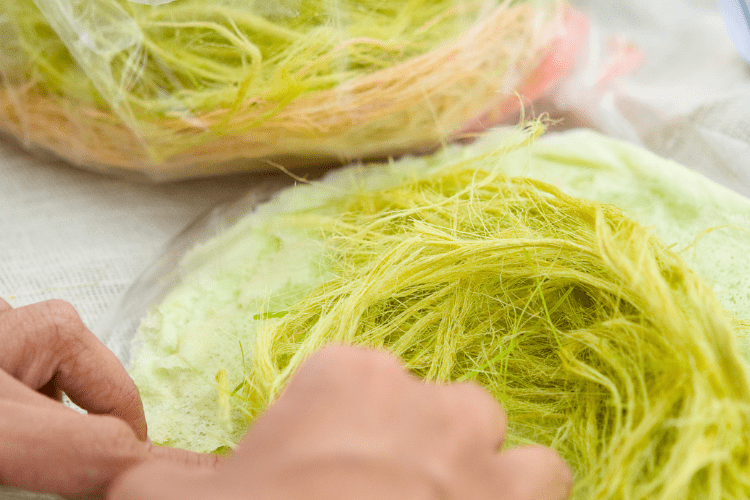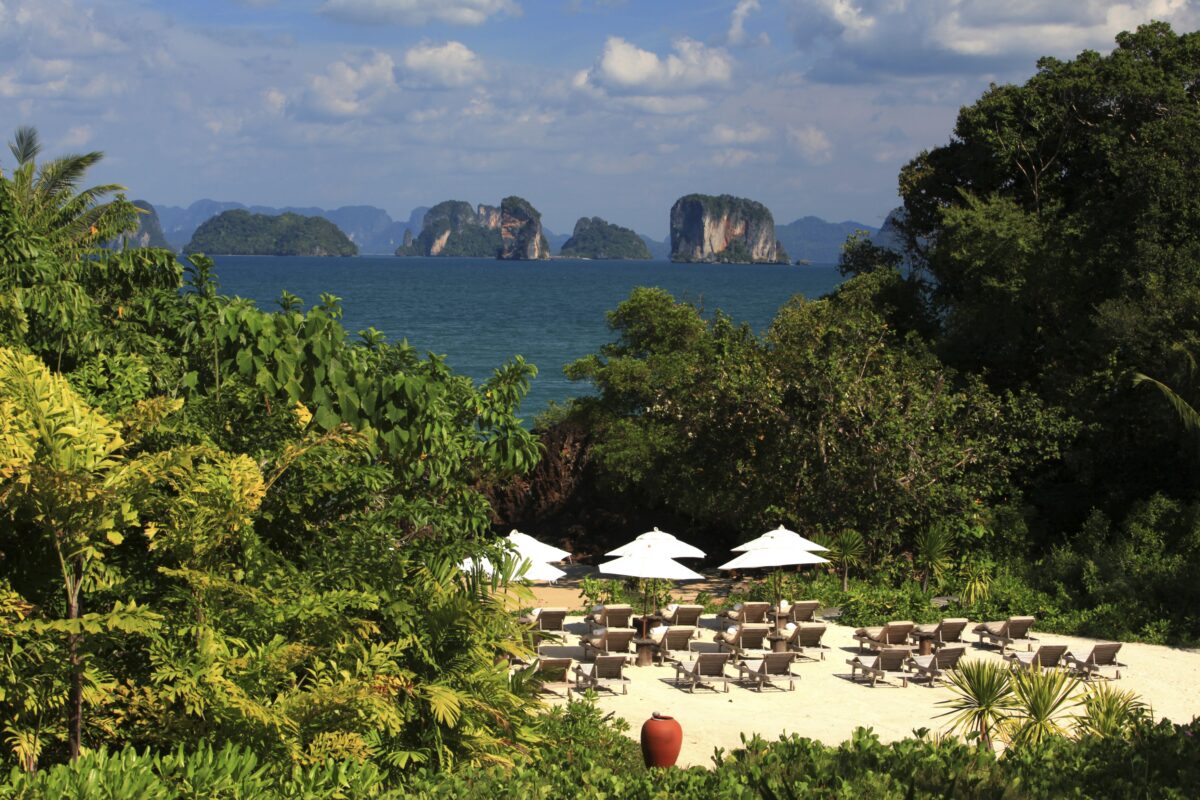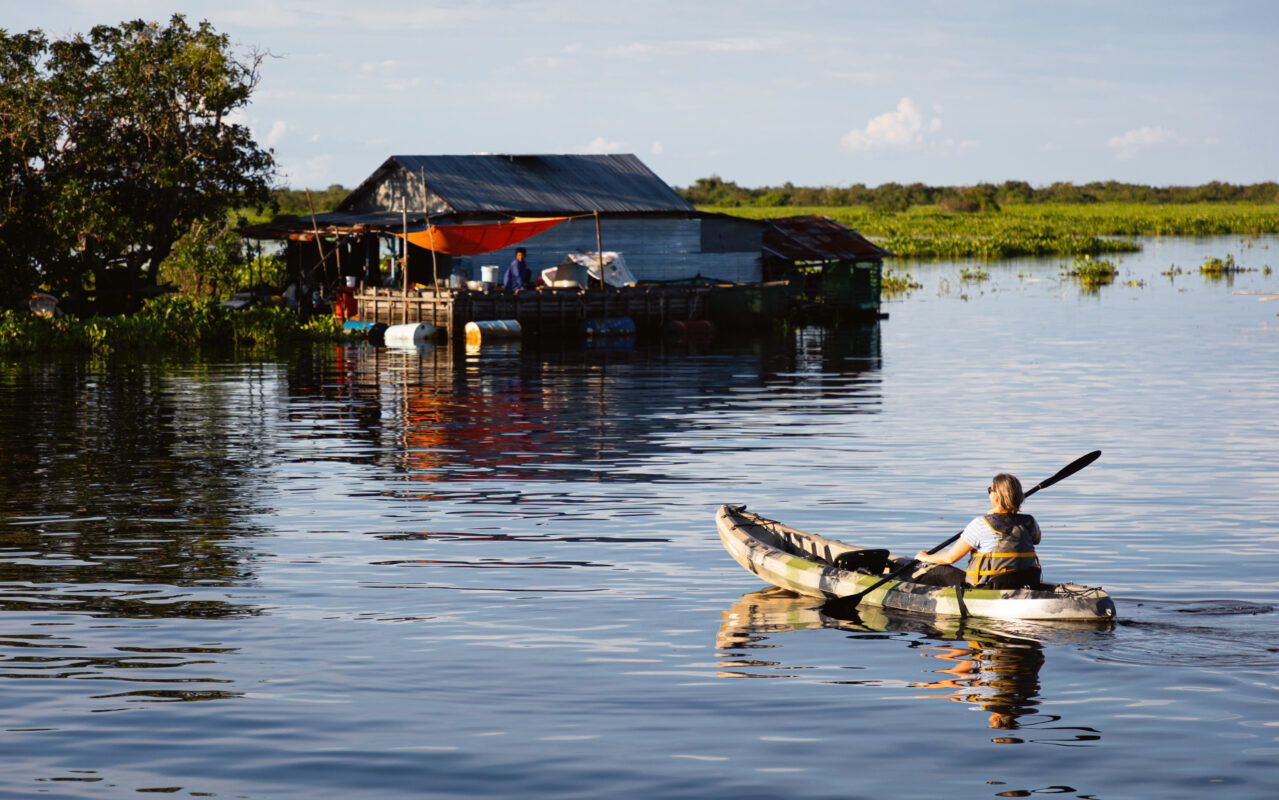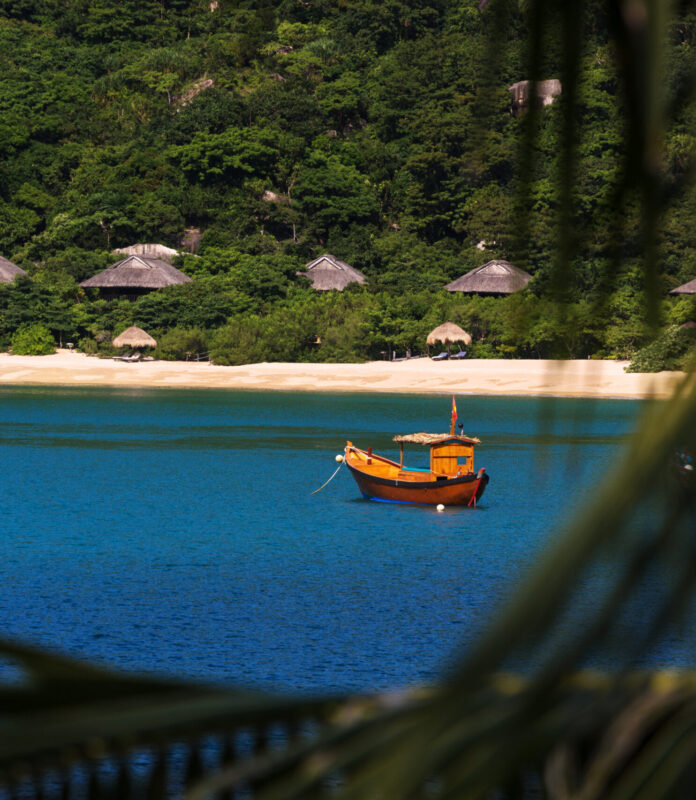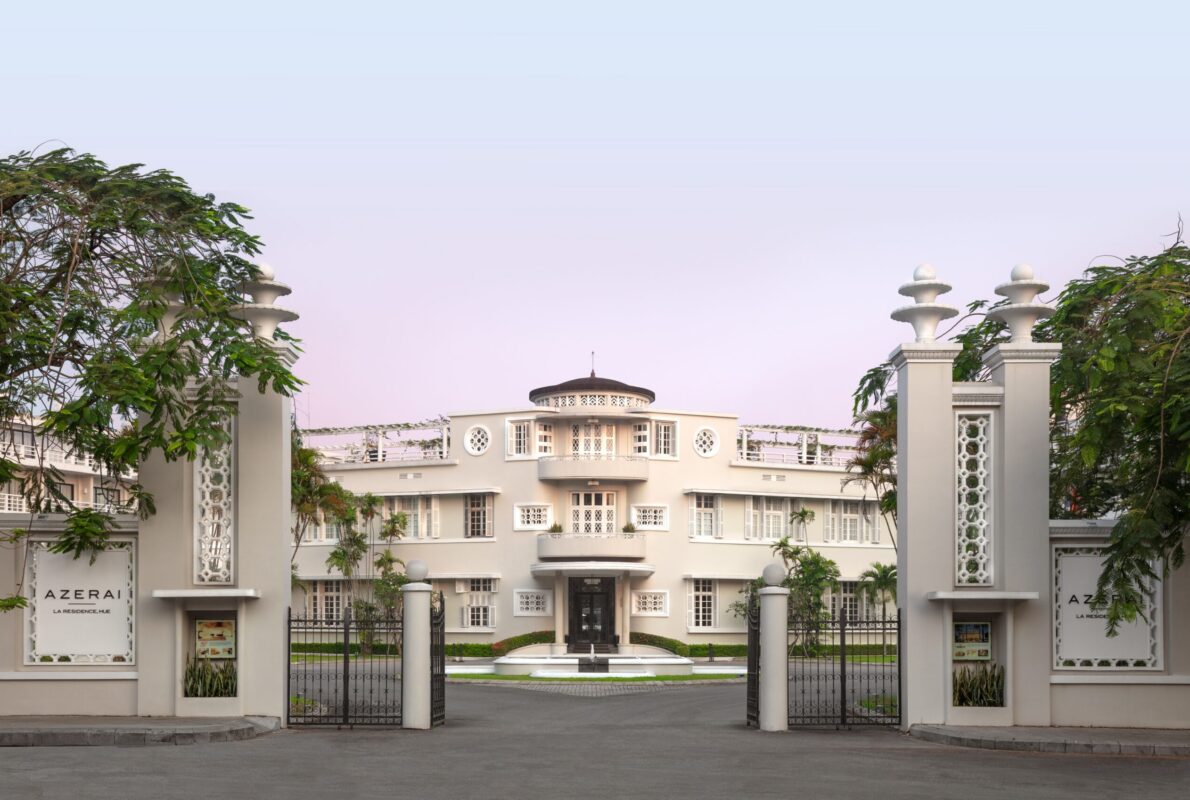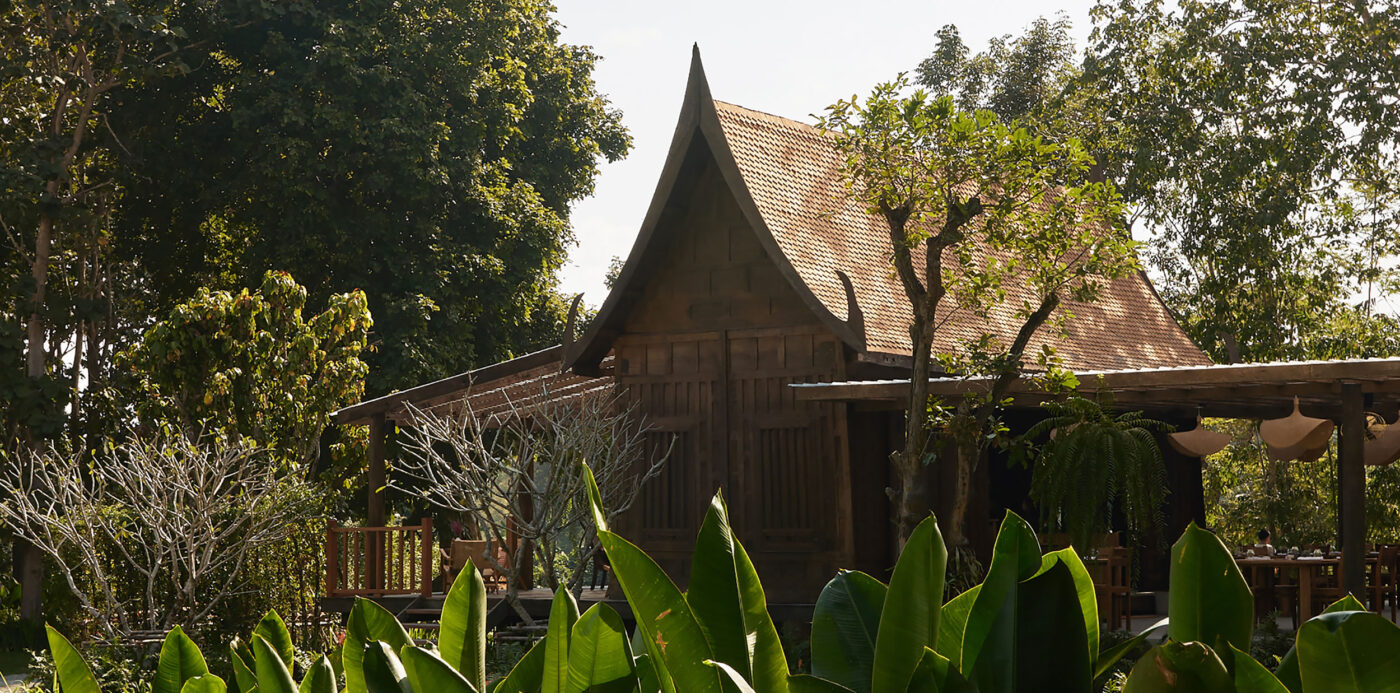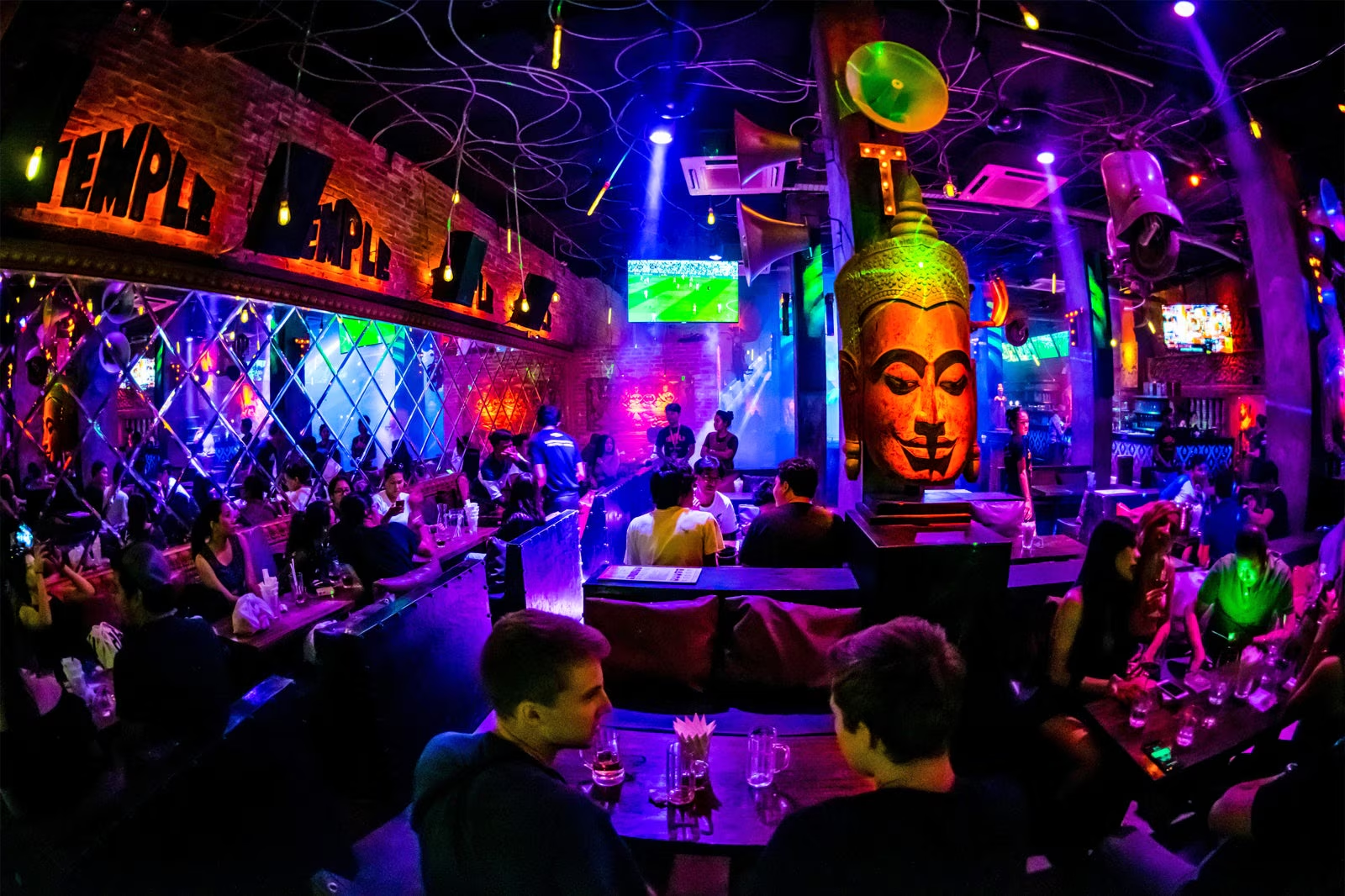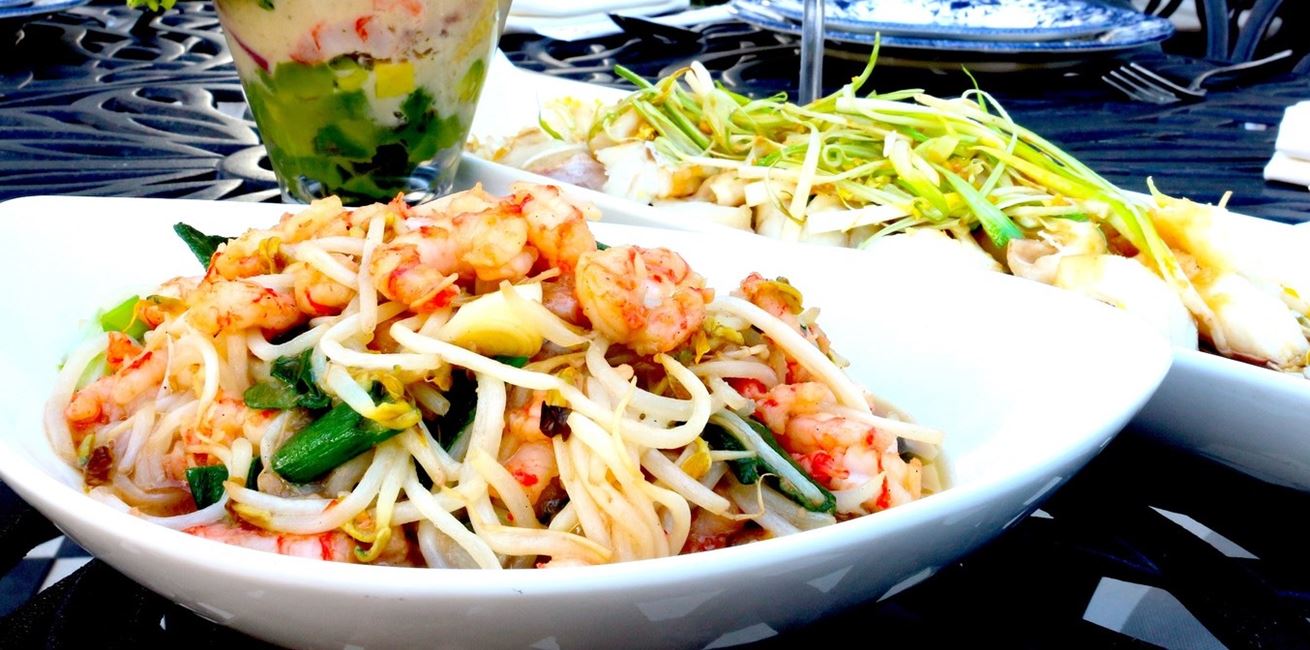What comes into your mind when we talk about Thailand? We bet Thai food is one of the aspects that will first pop-up in your thought. The variety of cuisine in Thailand is mind boggling in fact, Thai food is famous all over the world. Yet, Thai food can be enjoyed anywhere because Thai restaurant is located anywhere around the globe. But, it is best in Thailand where the atmosphere only found in the mid of local communities. Moreover, Thai meal usually involves a selection of dishes which are shared among family and friends. The fun part of sharing food is that it provides a tantalising variety of flavours and textures and creates a convivial occasion.
Let’s rewind back to the origin of Thai food
Thai food originated with the people who emigrated from the southern Chinese provinces into modern day Thailand many centuries ago. Historically there were many Szechwan influences in Thai cuisine, although over the centuries many other influences have affected Thai food. In a more distant past, Buddhist monk brought an Indian touch, and southern Muslim states influenced the cooking in the south of Thailand. Much later, Thai food was influenced by European cuisine after contact with Portuguese missionaries and Dutch traders. During these times there were even some influences from the Japanese. Today Thai food is its own, with a special unique blend of the 5 tastes: sweet, sour, bitter, salty, and spicy.
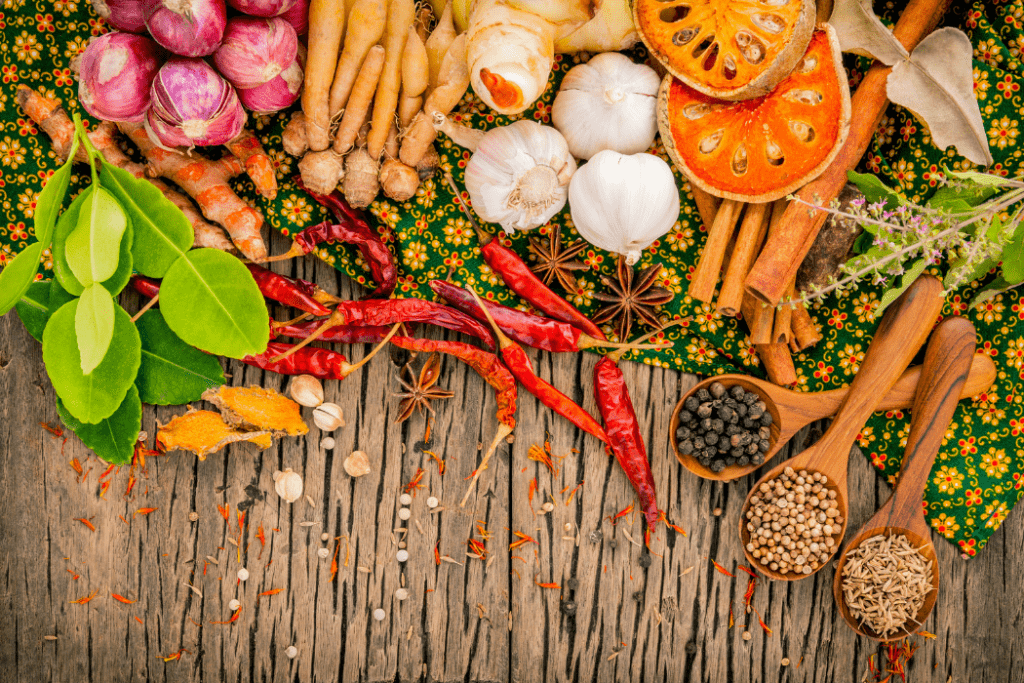
The main characteristic of Thai food is that each meal should comprise of four fundamental taste areas: spicy, sweet, sour and salty. The spice comes from chillies, the sweetness from cane or palm sugar. Tamarind or lime juice provides the acidity while the saltiness comes from a variety of ingredients such as soy sauce, fish sauce or shrimp paste. So, here is a sidenote for vegetarians as they need to be aware that some dishes may contain fish sauce or shrimp paste in other words, they are non-vegetarian. And no doubts, Thai gastronomy is diverse regionally with each of the kingdom’s five regions having distinct cuisines, and in some cases small areas and even individual towns within an area being known for their specialty. And of course, it is a thing that tourists shall not be missed!
Quick Fun facts
Thai food used to be hotter and spicier?
Funnily enough yes, historically the Thai people were very good at “Siam sing” foreign culinary influences. In fact, chili didn’t exist in Thai cuisine until the 16 hundreds, when they were brought over by Portuguese missionaries, who had acquired a taste for them during their forays in South America. As a result, the Thais used more and more heavy spices and the food became hotter and hotter. In more recent times there has been a shift in Thai cooking style with less and less use of heavy spice mixes, and the increase in use of fresh herbs such as lemon grass in most dishes. So yes, over the years Thai food has got less spicy and more herb flavored.
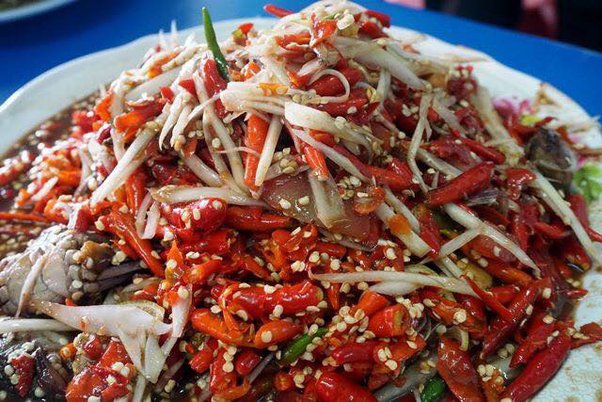
How do Thai Curries differ from other south Asian curries?
Generally, since Thai cuisine uses a lot of coconut milk, Thai curries are much more liquid than those of India for example. Furthermore, with a tradition of mixing ingredients Thai curries use a lot of vegetables, even in meat dishes, so unlike other south Asian curries where the meat curry is separate to the vegetable dishes, in Thailand the meat curry will also contain a good amount of vegetables. The final difference in Thai curries is how spices are used; most Thai cuisine uses spices in a paste form. This use of paste reduces cooking times in comparison to Indian curries – since the spices are precooked. It also offers a more enhanced flavor since the spices have had a time to marinate and mature together.
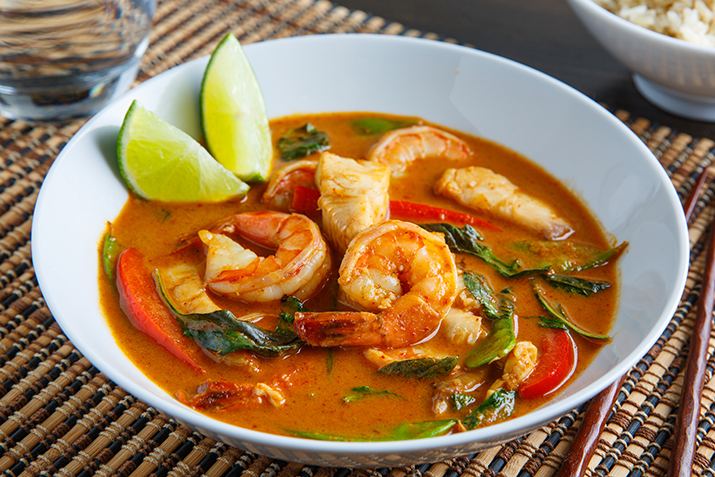
How much do you know about Thai gastronomy?
Thai gastronomy can be defined in numerous ways. However, in our content we will only highlight the following aspects including;
- Thai street food
- Local food
- Michelin
- Thai desserts
Street food
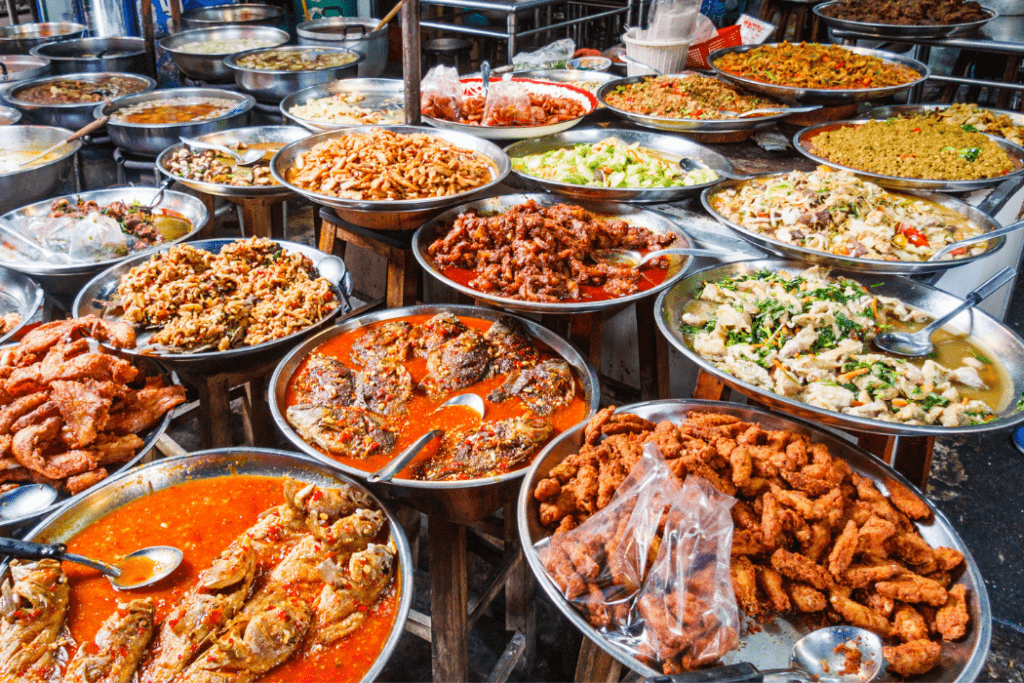
Why street food is famous in Thailand
It doesn’t take long for visitors to Thailand to realise that street food is practically a way of life there.
Considering that many houses aren’t equipped with full kitchens, and raw ingredients can cost more than prepared meals, it’s no surprise that eating out is more common than eating in.
What can you expect from Thai Street Food?
First of, it is undeniable that Thai street food is very affordable and delish compared to other countries! Because even street vendors that get a lot of tourist traffic typically won’t charge more than 30-60 baht ($2-5 AUD) for their offerings.
Besides, if your priority when travelling is to experience the culture or enjoy the food (or to save money), the Thai street food scene will be a dream come true. Bangkok is indeed the country’s mecca of street food, but there are plenty of stalls, carts, and markets all across Thailand.
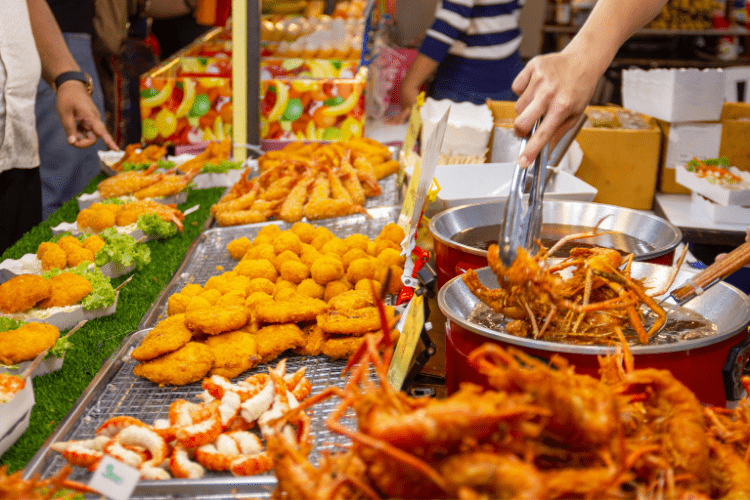
From noodles to curries, roti to sticky rice, Thai style salad to Thai skewer. you could spend weeks sampling Thai cuisine. Some of the top street food to eat in Bangkok or elsewhere in Thailand includes pad thai, pad see ew, massaman curry, papaya salad, banana roti, and mango sticky rice.
Although, street food in Thailand (and many other countries) is no riskier than restaurants. When you eat on the street, you’re more likely to be served fresh food and to get to see it being prepared, both of which go a long way toward keeping you healthy.
One big benefit of street food is that you can often see the food being cooked, so take advantage of it!
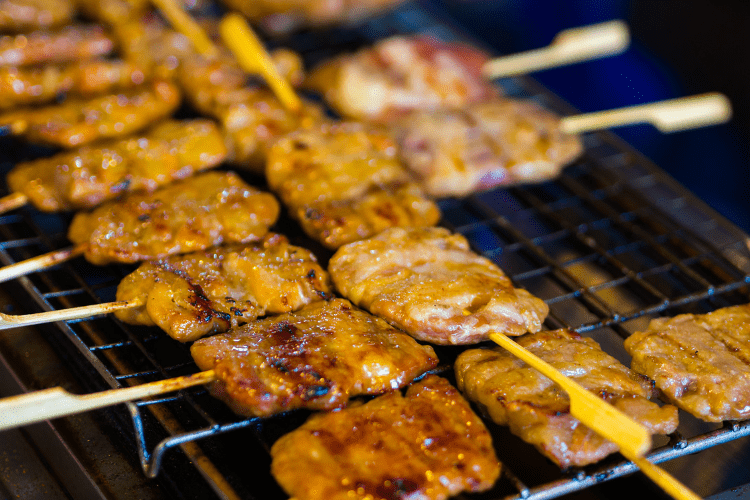
No worries, if you are not a fan of spicy food!
As in Thailand, the food can be hot. Even if you’re a spicy food fan at home, I recommend starting with mild or medium spice levels until you have a better idea of what to expect.
And if you don’t typically like spicy food, make sure your food in Thailand is as mild as possible.
Some stalls that prepare food to order will ask how spicy you want it, and even if not, you can always try to make a special request. When you order, say “Mai sai prik” (don’t add chilli) or “Mai pet” (not spicy). Of course, a dish that’s “mai pet” to them might not be to you!
Places with menus sometimes denote the spiciness of each dish, too, and many stalls also have sauces of varying levels of spiciness that you add yourself. Keep in mind that two of the most popular dishes, som tam (papaya salad) and tom yum (a particular type of soup), are especially spicy by default.
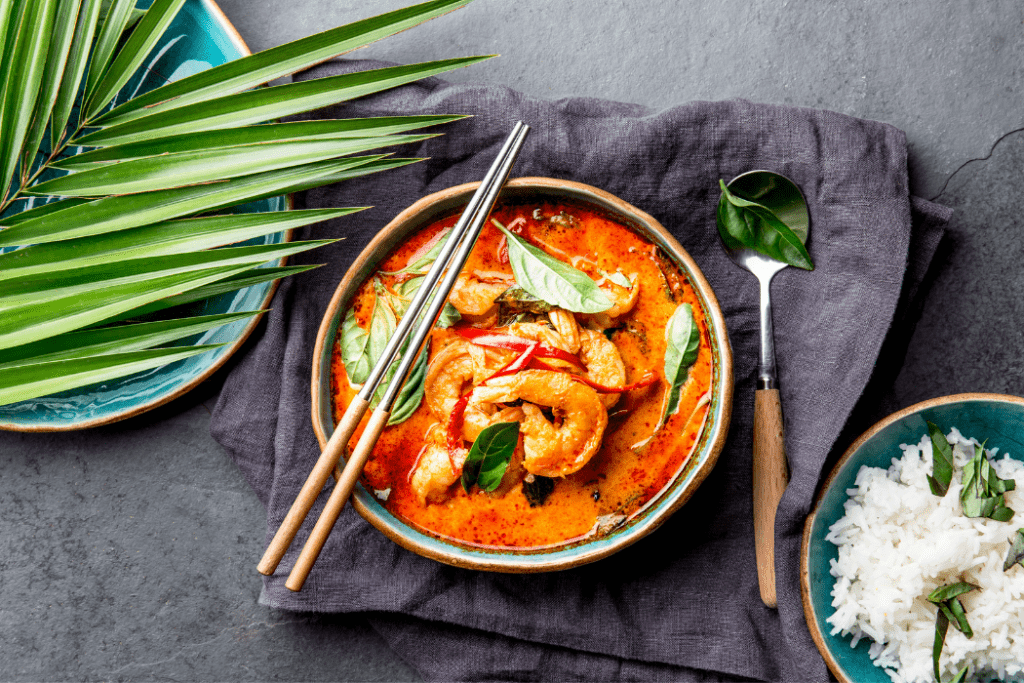
Know how to communicate about your allergies
If you have any allergies or other restrictions, eating street food in Thailand is extra complicated. Before you hit the food stalls, look online to see if anything you can’t eat appears in everyday dishes. Not every vendor follows the same recipe of course, but that will give you an idea of whether there are dishes you need to be careful with.
Drink like locals
Thai iced tea (cha yen) is one of a must drinks in Thailand and it can be easily found everywhere around Thailand. It’s a creamy orange-colored beverage sent from heaven and it might just change your life. However, Thai iced tea (my favorite) or Thai iced coffee can be very sweet because they normally add heaps of sweetened condensed milk. They might be surprised, but request a “little” bit of the sweetener, taste test, then ask for more if you wish.
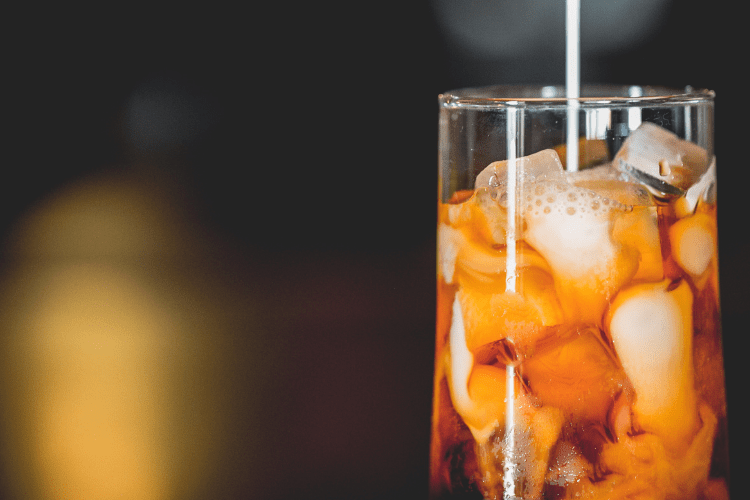
Don’t forget to try breakfast in Thai street food way!
Breakfast offerings typically include savory items like a combination of pork or beef with sticky rice, pan fried eggs, congee and deep fried dough stick. If you can’t wrap your head around soup for breakfast, pick up some fresh fruit, a fruit smoothie or a Thai iced coffee.
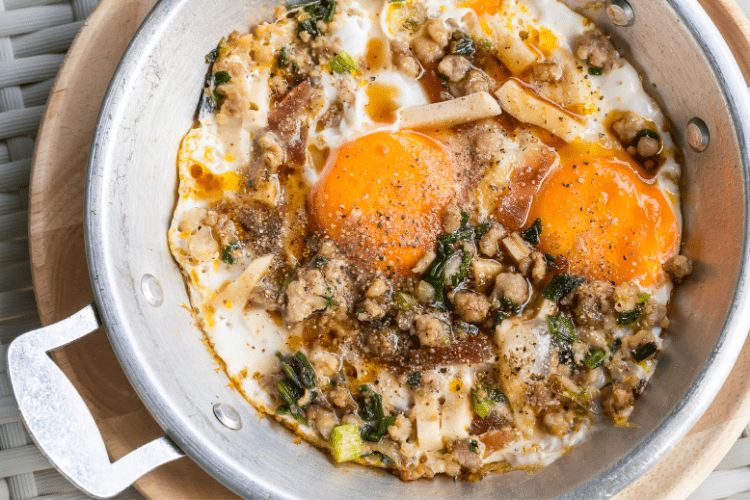
Thai local food
By regions
Thailand is a big country with a diverse geography, and over the years this has led to the development of regional differences in its style of cuisines. Currently there are 4 distinct styles of cooking in Thailand.
Northern
The cooking in northern Thailand is generally milder than in the rest of the country, sticky rice is preferred, traditionally it is kneaded into small balls with the fingers. There is a strong influence from neighbouring Burma with popular dishes like Kaeng Hang Le, a pork curry flavored with ginger, turmeric, and tamarind.
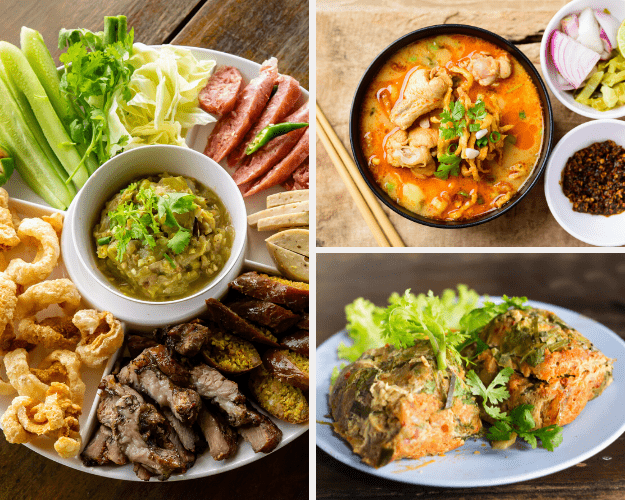
North-eastern
The food in the north east is influenced by Laos; as a general rule the food is highly spiced, and sticky glutinous rice is the preferred staple for north-eastern dishes. Although there are plenty of meat dishes, historically meat was scarce in the villages, and the main source of protein were shrimp and freshwater fish. These were often fermented to increase their shelf life.

Central
The central region offers cuisine that is midway between the north and south, although fragrant Jasmine rice is preferred to the sticky variety. What makes the central region cuisine special is that it is home to royal cuisine. This type of cooking which originated in the royal palace involves much more elaborate meals, put together with complex techniques. It is more of an art form than just regular cooking.

Southern
Southern Thai cooking is the most popular outside of Thailand since that is the main tourist region of the country. In southern cuisine there is much more use of coconut milk in many dishes. Coconut replaces Ghee for frying and there is a heavy use of seafood in the dishes. Appetizers in the south use a lot of cashews from local plantations, and coconut flesh as a standard condiment.
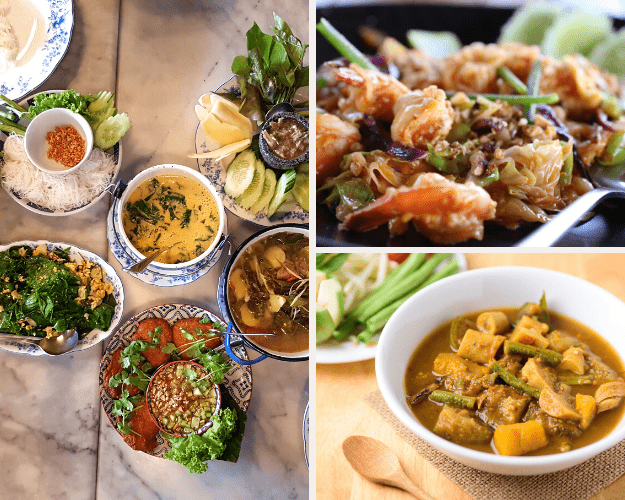
By top dishes
- Tom Yum Goong (Spicy Shrimp Soup)
The quintessential Thai aroma! A bold, refreshing blend of fragrant lemongrass, chili, galangal, lime leaves, shallots, lime juice and fish sauce shapes this classic soup, giving it its legendary herbal kick. Succulent fresh prawns and straw mushrooms lend it body. A versatile dish that can fit within virtually any meal, the distinctive smell reminds you of exotic perfume, while it’s invigorating sour-spicy-hot taste just screams ‘Thailand’!
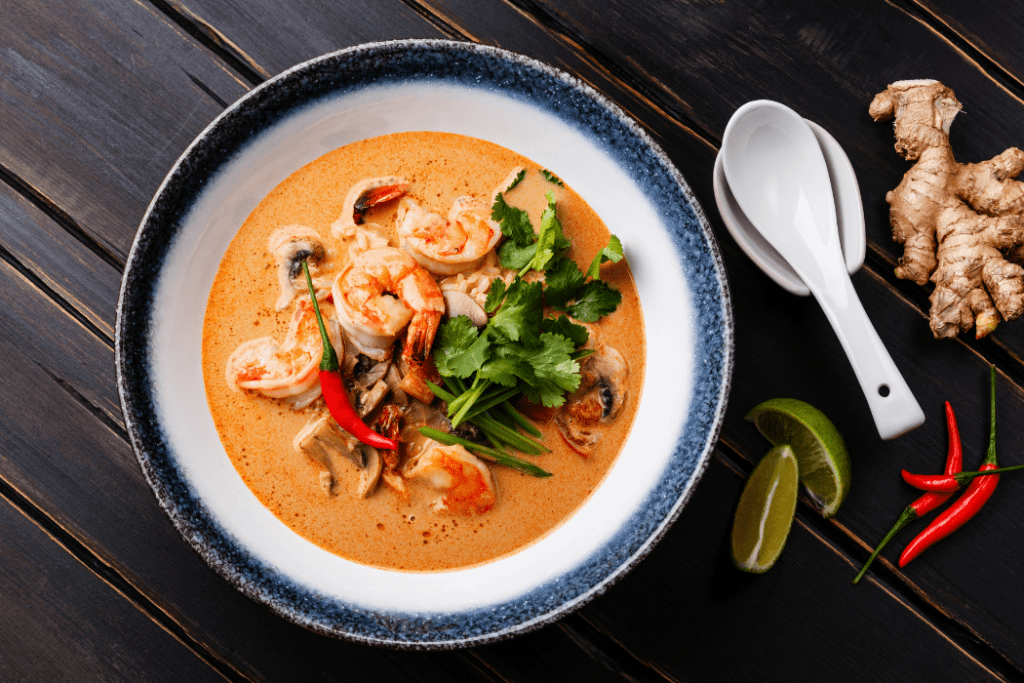
- Som Tum (Spicy Green Papaya Salad)
Hailing from the Northeast state of Isaan, this outlandish dish is both great divider – some can’t get enough of its bite, some can’t handle it – and greatly distinctive. Garlic, chilies, green beans, cherry tomatoes and shredded raw papaya get dramatically pulverized in a pestle and mortar, so releasing a rounded sweet-sour-spicy flavor that’s not easily forgotten. Regional variations throw peanuts, dry shrimp or salted crab into the mix, the latter having a gut-cleansing talent that catches many newcomers by surprise!
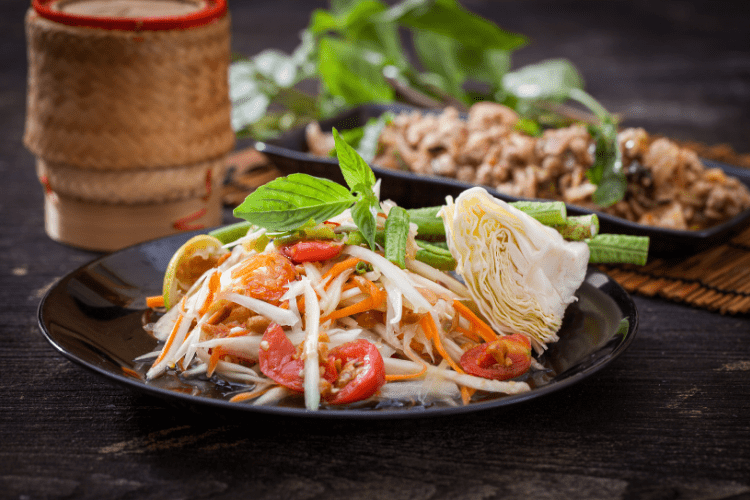
- Tom Kha Kai (Chicken in Coconut Soup)
A mild, tamer twist on Tom Yum, this iconic soup infuses fiery chilies, thinly sliced young galangal, crushed shallots, stalks of lemongrass and tender strips of chicken. However unlike its more watery cousin, lashings of coconut milk soften its spicy blow. Topped off with fresh lime leaves, it’s a sweet-smelling concoction, both creamy and compelling.
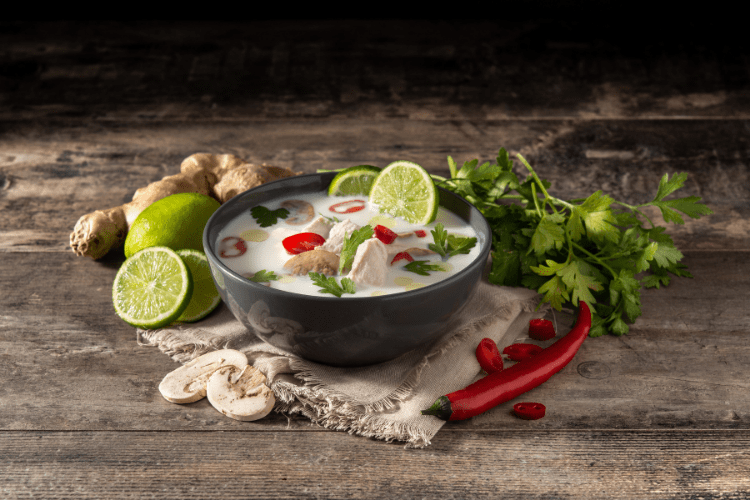
- Pad Thai (Thai style Fried Noodles)
From Cape Town to Khao San Road, the default international Thai dish! Dropped in a searing hot wok, fistfuls of small, thin or wide noodles (you choose) do a steamy minute-long dance alongside crunchy beansprouts, onion and egg, before disembarking for the nearest plate. A truly interactive eating experience, half its fun (and flavor) lies in then using a quartet of accompanying condiments – fish sauce, sugar, chili powder and finely ground peanuts – to wake it from its slumbers.
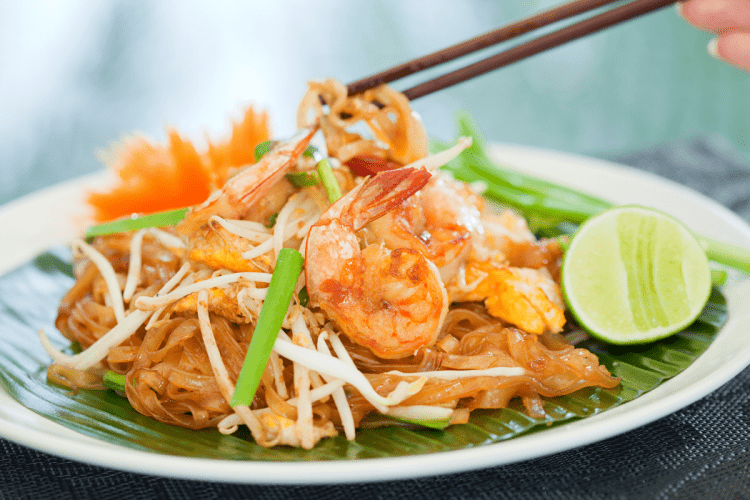
- Pad Krapow Moo Saap (Fried Basil and Pork)
An incredibly popular ‘one plate’ dish for lunch or dinner, fried basil and pork is certainly one of the most popular Thai dishes. It is made in a piping hot wok with lots of holy basil leaves, large fresh chili, pork, green beans, soy sauce and a little sugar. The minced, fatty pork is oily and mixes with the steamed white rice for a lovely fulfilling meal. It is often topped with a fried egg (kai dao) you will most likely be asked if you would like an egg with it. Be aware that most Thai people ask for lots of chili in this dish so if you are not a fan of tingling lips, ask for you pad krapow ‘a little spicy’.
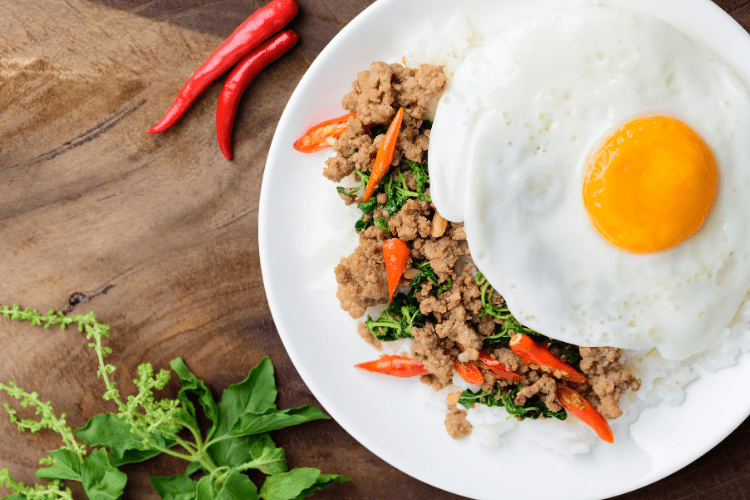
- Massaman
Massaman curry the “World’s Best Food” in its recently updated list of the 50 most delicious foods ever created. Massaman, a coconut-based meat curry as the “the king of curries and perhaps the king of all foods,” due to its strong flavors—the dish masterfully blends spicy, coconut, sweet, and savory flavors.
Despite the popularity of Thai cuisine around the world, Bangkok has always found it hard to be taken seriously as a cosmopolitan food destination. Locals and travellers alike enjoy pad thai and tom yum goong, but Bangkok lacked the variety, quality and consistency that respected Michelin Guide inspectors traditionally looked for. The arrival of the red guide in the City of Angels attests to the dramatic changes in Bangkok’s culinary landscape over the past few years.
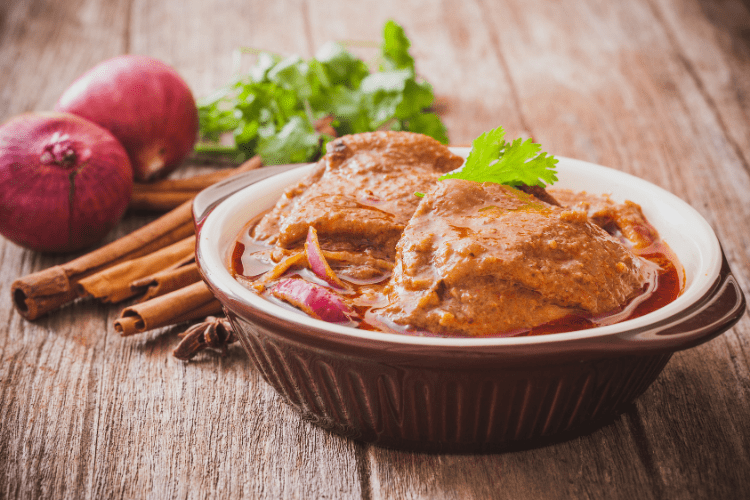
Michelin
Recently, the MICHELIN Guide has explored new territories in the South of Thailand besides Bangkok, in search of the finest restaurants and hotels. Thrilled by the culinary and hospitality scene of Phuket, which offers unique and fascinating characteristics as it consists of a blend of various different cultural influences; MICHELIN inspectors are excited to discover and reveal the best dining and lodging experiences.
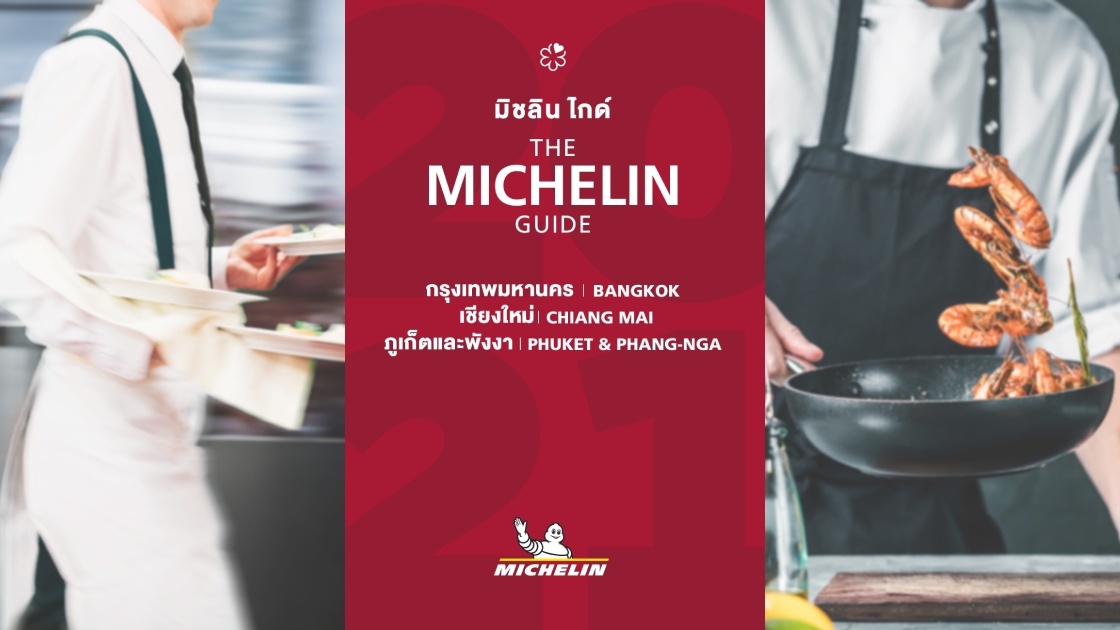
The extension of The MICHELIN Guide’s reach to Phuket and Phang-nga is part of Michelin Group’s commitment to contribute to the prestige of local Thai gastronomy and hospitality scenes on a worldwide scale, and make travel more enjoyable for everyone – in line with Michelin’s corporate slogan: “A Better Way Forward”. The local cuisine in Phuket is distinctive and flavorful with a wonderful blend of influences from India, Malaysia, China, and the Peranakan ethnic group. Basically, it truly offers an infinite variety of flavors worth discovering.
Phuket is also well-known for excellent super-fresh seafood. Similar to the food scene in Bangkok, the Pearl of Andaman offers ultimate culinary experience of both traditional and inventive creations, across all levels of price range from sophisticated restaurants to street vendors. As popular tourist destinations, both cities have a range of accommodation options on offer to visitors to suit all budgets and preferences, from international-standard hotels to simple guesthouses.
Moreover, the jovial Michelin Man distributed a total of 20 stars at a crowded ceremony: 14 one-star restaurants made the list while the list of about 400 two-star restaurants in the world grew by three. No three-star restaurants were named for this first edition in Thailand, interpreted by many as leaving some room for growth in the years to come.
Thai Dessert
Thai desserts reflect Thai cuisine in the way certain ingredients are used notably rice, coconut, and fruits. Thai desserts are known as Khanom in Thai or sweet snacks. We believe that eating Khanom is a great way to end a meal and smoothen the palate after eating spicy Thai dishes.
Basically, Thai desserts are made of two local ingredients which are sticky rice and coconut. Despites, there are some others unique munchies that you cannot leave Thailand without eating. So, let’s indulge in the delightful and popular Thai desserts.
NO.1 Sticky Rice
Sticky rice is a very particular staple of Thai cuisine. It is grown mainly in Southeast Asia from a specific variety of rice (with opaque grains) that once cooked, stick!
Many traditional Thai desserts are made using sticky rice. Here are the three most popular sticky rice based desserts.
- Mango sticky rice
It made with fresh mangoes cut into slices and placed on top of a bed of sticky rice. A sweet coconut milk is then poured over the mango and sticky rice. The dessert is topped off with a sprinkle of fried mung beans.
Where To Have It
Your best bet to find mango sticky rice is at the local market. You will also find it at restaurants, though outrageously priced.
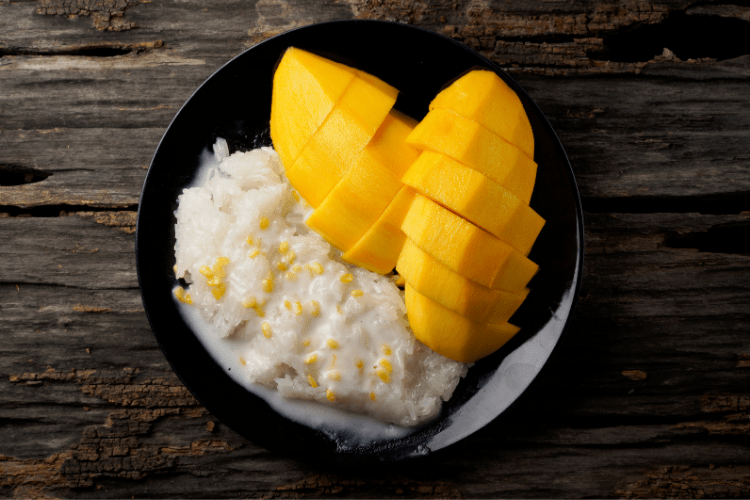
- Durian Sticky Rice – Khao Niao Toorien
This is another version of the previous Thailand dessert. This time the famous Durian fruit replaces the mango. Durian is often called the “King of Fruits” in Southeast Asia. It is also a popular filling in Vietnamese desserts. Durian sticky rice is prepared the same way as the mango sticky rice. Though most of the time the fruit has been sliced ahead of time.
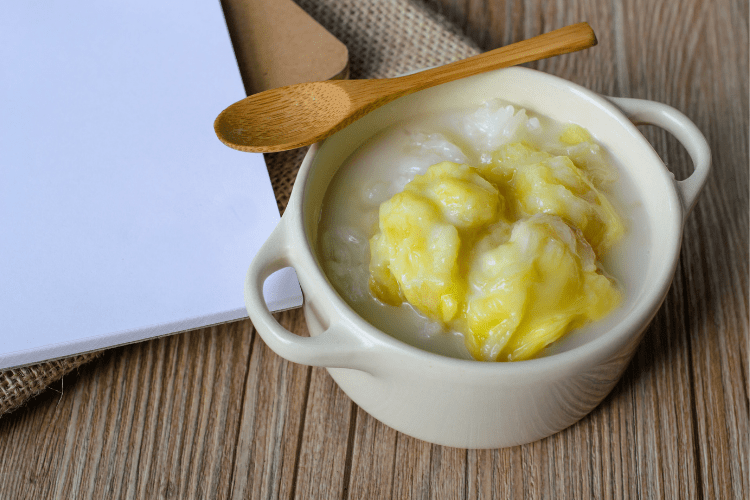
- Bamboo Sticky Rice – Khao Lam
This is another famous Thai dessert not to miss while in Thailand. This time the sticky rice is roasted in Bamboo sticks over charcoal. You will find different kinds. Some with black beans, sesame or different types of sticky rice, like black sticky rice.
The rice takes the flavor of the bamboo giving it a unique taste. Ultimately, the experience of eating a bamboo sticky rice is what makes this dessert so appealing!
The best way to eat it is to crack the bamboo open from the top, and then pull down strips of bamboo slowly. Once you have peeled down a few strips around, you can them grab a piece of sticky rice and eat with your hands.
Where To Have It
It is not easy to find this unique Thai sweet. The best places to find it is at street fairs or certain markets. We had it at Warorot market in Chiang Mai, near the sweets section.
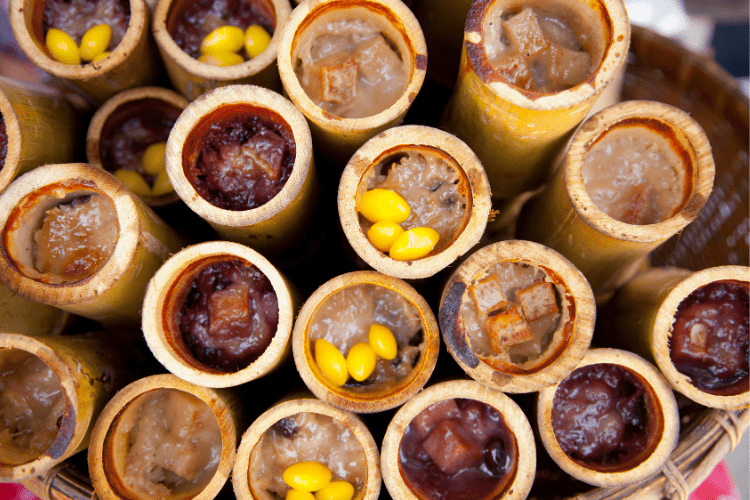
- Thai Sticky Rice Cake- Kao Tom Mud
This delicious Thai dessert is made of sticky rice with coconut milk and a filling inside. There is a saying that Kao Tom Mud symbolizes a couple’s life since they usually pair two Kao Tom Mud together tied with a bamboo strip.
We had it with black beans, tamarind and banana. You can also find it with taro as well. Wrapped in a banana leaf, it is deliciously sweet and slightly chewy.
Where To Have It
This popular Thai dessert is most likely found at the markets
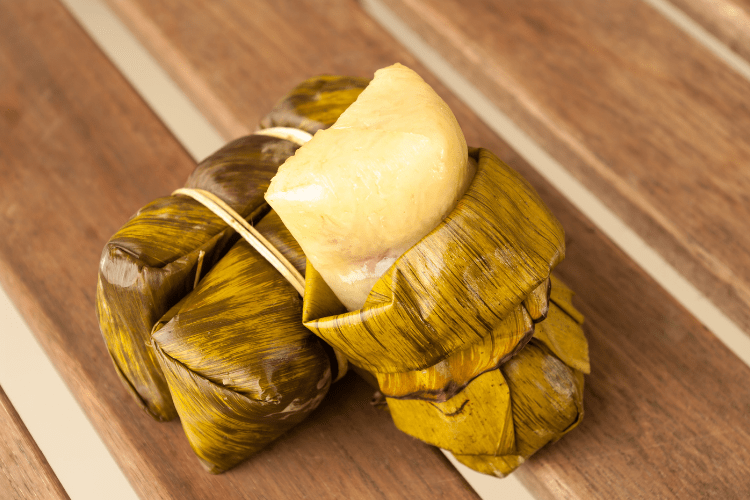
NO 2. Coconut milk
- Filled Coconut Cream – Khanom Sod Sai
These small triangular banana leaf wrappings will grab your attention as you peruse the street food vendors in Thailand. The inside is filled with a creamy filling and a brown colored center with tamarind flavor.
The consistency of this Thailand dessert is similar to jelly on the outside while the tamarind filling is slightly chewier. Easy to eat as a snack, it is not too sweet and the tamarind flavor balances out the coconut.
Where To Have It
The most popular place to find this traditional sweet is at the local markets or street carts.
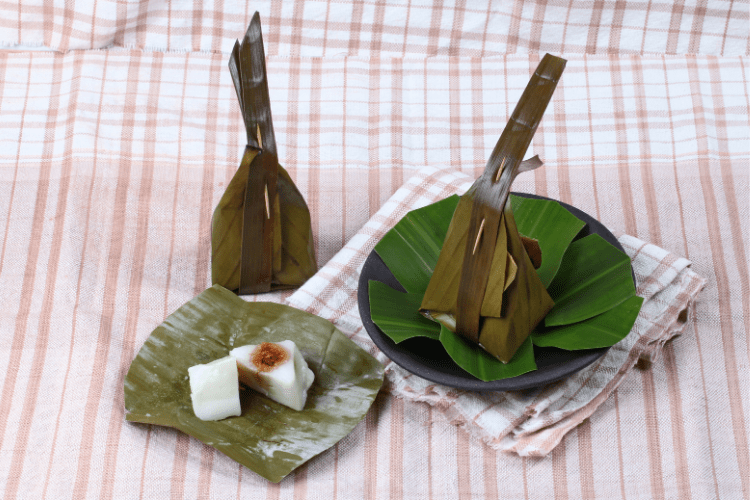
- Coconut Ice Cream – Itim Kati
Coconuts are used in many Thai dishes and it is no surprise to see them used in desserts. The ice cream is unique in that it is made completely with coconut milk.
The Thais, like most people in the Asia, do not easily digest lactose (sugar that occurs naturally in milk). Without the lactose, coconut ice cream can be enjoyed without the side effects of dairy.
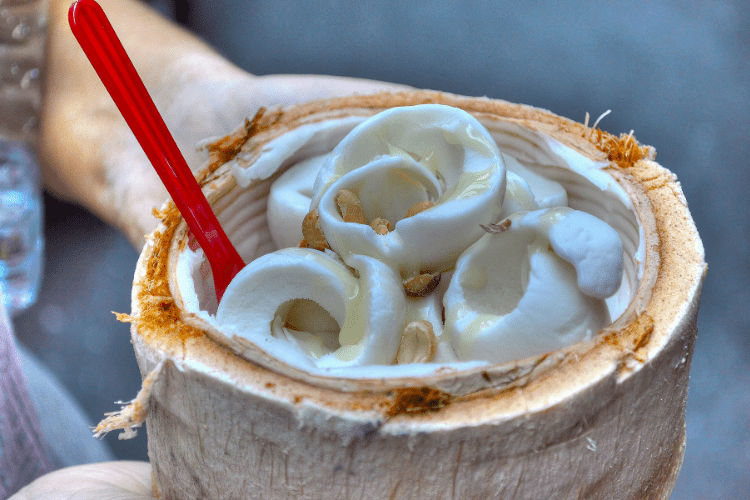
- Grilled Coconut Cakes – Khanom krock
These Thai-style coconut pancakes are a favorite street food. They are cooked on a hot griddle and served warm. These pancakes are made with rice flour and flavored with coconut and palm sugar. They are light and moist with an airy texture.
Where To Have It
You will find vendors selling them at popular street corners.
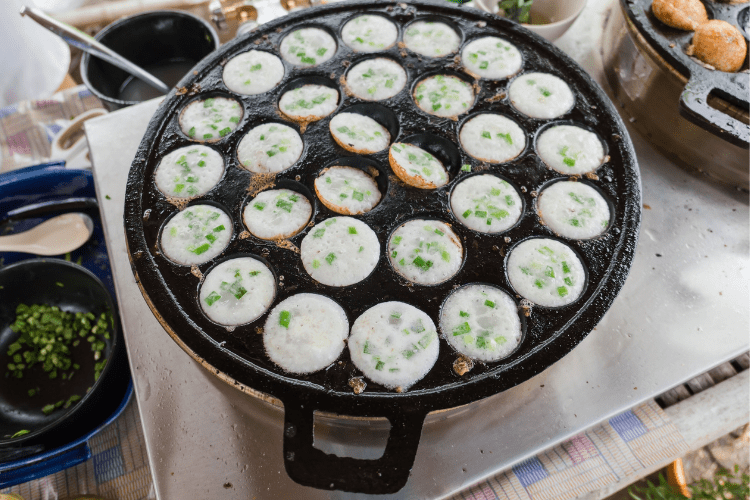
NO.3 Thai Crispy Pancakes – Khanom Buang
The base or the crispy pancake is made of rice flour and mung bean flour. Coconut cream is topped on the small pancakes before fillings are placed on it. You will find two types of toppings, sweet and savory.
The sweet fillings has shredded coconut and golden threads (egg yolk strips). The salty filling contains shredded coconut, chopped spring onions and shredded shrimp.
Where To Have It
You will find vendors selling them at popular street corners.
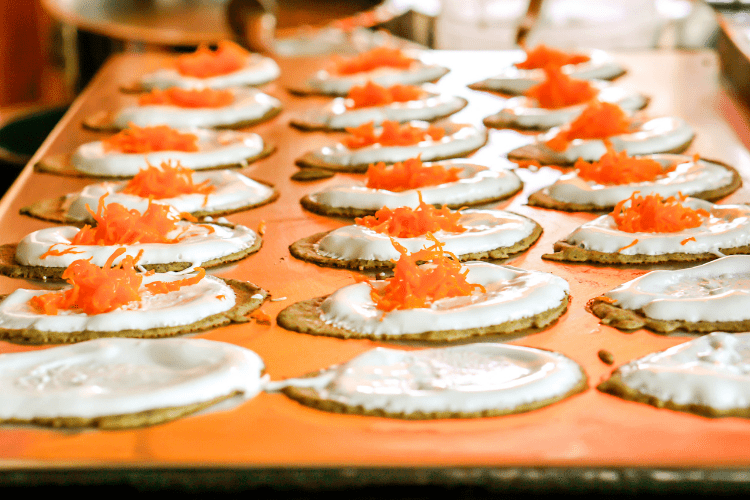
NO.4 Round Egg Yolk Drop – Tong Yord
Made with egg yolk, sugar, rice flour, and jasmine water, these little balls are a special treat for events and festivities. While quite tasty, be warned as they are overwhelmingly sweet.
Where To Have It
You will find this treat in the sweets section of local markets throughout Thailand.
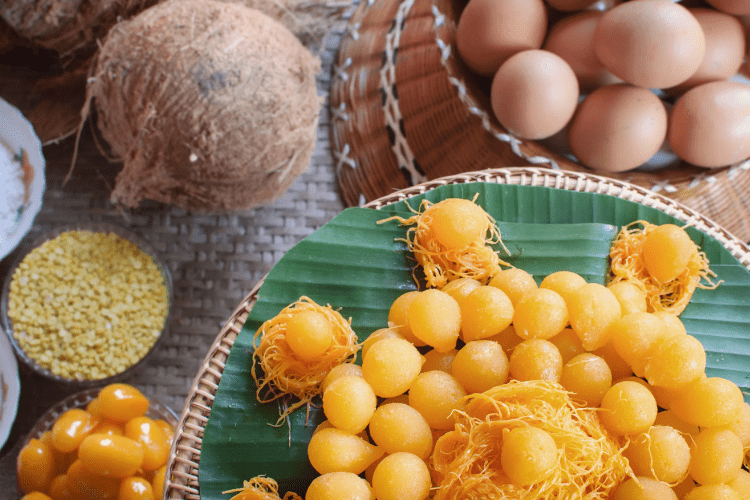
NO 5. Roti Sai Mai – Unusual Candy Floss Crepes Thai Dessert
Roti Sai Mai are typically associated with the ancient kingdom of Ayutthaya. They are small thin, colorful pan-fried pancakes flavored with pandan, strawberry or banana flavors. You stuff each roti or crepe with Thai-style candy floss or cotton candy which comes in a variety of colors. Served warm, the candy floss melt in your mouth.
Where To Have It
Roti Sai Mai is sold by street vendors typically Thai-Muslim, in and around Ayutthaya. The crepes are made in front of you.
